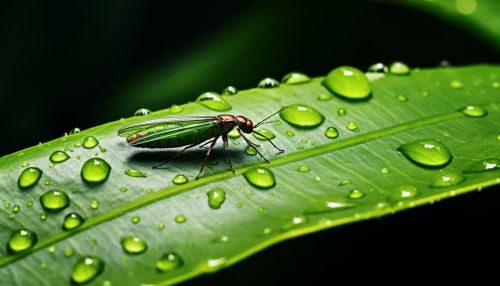The Evolution of Insect Resistance to Pesticides
Introduction
The evolution of insect resistance to pesticides is a significant issue in the field of agriculture and pest control. This phenomenon occurs when insect populations adapt to survive exposure to pesticides that were previously lethal, leading to a decrease in the effectiveness of these chemicals over time. This article delves into the underlying mechanisms, historical context, and implications of this evolutionary process.


Mechanisms of Resistance
Insects can develop resistance to pesticides through several mechanisms, including metabolic resistance, target-site resistance, penetration resistance, and behavioral resistance.
Metabolic Resistance
Metabolic resistance occurs when insects evolve to produce enzymes that can break down pesticides into less toxic substances. This mechanism often involves the upregulation of detoxification enzymes such as cytochrome P450s, esterases, and glutathione S-transferases.
Target-Site Resistance
Target-site resistance involves changes in the insect's physiological target of the pesticide, rendering the chemical ineffective. This can occur through point mutations in the target protein, leading to a modified binding site that the pesticide cannot effectively bind to.
Penetration Resistance
Penetration resistance is a mechanism where the insect evolves a thicker or more resistant cuticle, reducing the amount of pesticide that can enter its body. This can be achieved through changes in the cuticle's composition or structure, or through the upregulation of efflux transporters that actively pump the pesticide out of the insect's body.
Behavioral Resistance
Behavioral resistance involves changes in the insect's behavior that allow it to avoid exposure to the pesticide. This can include changes in feeding, mating, or oviposition habits, or the development of a preference for untreated areas.
Historical Context
The evolution of insect resistance to pesticides has been a recurring issue since the advent of synthetic pesticides in the mid-20th century. The first reported case of resistance was in the housefly (Musca domestica) to DDT in 1947, just a few years after the widespread introduction of this insecticide. Since then, resistance has been reported in hundreds of insect species to all major classes of insecticides.
Implications and Management
The evolution of insect resistance to pesticides has significant implications for agriculture and public health. It can lead to increased costs for farmers, who must use more pesticides or switch to more expensive alternatives. It can also undermine efforts to control disease vectors, such as mosquitoes that transmit malaria or dengue fever.
Managing insect resistance requires an integrated approach, including the use of multiple pesticides with different modes of action, the rotation of crops, and the use of non-chemical control methods. Monitoring of resistance levels and the implementation of resistance management strategies are also critical.
